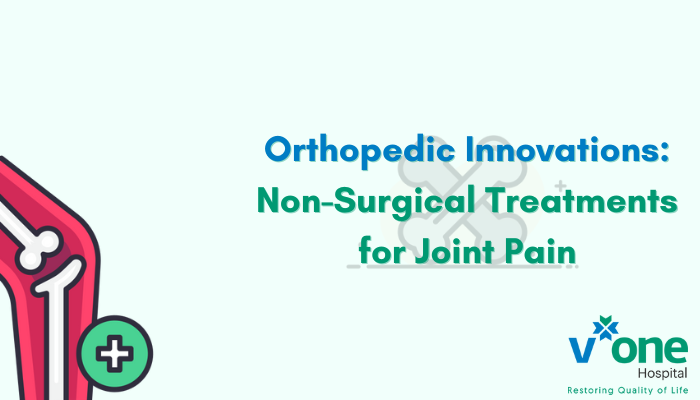Orthopedic Innovations: Non-Surgical Treatments for Joint Pain
Orthopedic issues, especially joint pain, have long been a significant concern for people of all ages. Traditionally, surgery was the primary solution, but the landscape of orthopedic treatments has evolved significantly in recent years. Thanks to pioneering research and technological advancements, non-surgical treatments have emerged as effective alternatives for individuals seeking relief from joint pain. In this comprehensive blog post, we will explore the latest non-invasive orthopedic treatments, shedding light on each innovative method.
Non-Surgical Treatments for Joint Pain
Here are the non-surgical treatment options for joint pain:
1. Platelet-Rich Plasma (PRP) Therapy: Harnessing the Healing Power of Blood
Platelet-rich plasma (PRP) therapy is a cutting-edge non-surgical treatment that utilizes the patient’s own blood to promote healing. During the procedure, a small sample of the patient’s blood is drawn and then centrifuged to separate the platelets and plasma from other blood components. The concentrated PRP is then injected back into the affected joint.
PRP therapy is gaining popularity due to its ability to accelerate the body’s natural healing processes. Platelets are rich in growth factors, which play a pivotal role in tissue regeneration and repair. When injected into the damaged joint, PRP stimulates the growth of new, healthy cells, reducing inflammation and alleviating pain. This non-invasive approach not only relieves joint pain but also improves joint function and mobility.
2. Stem Cell Therapy: Regenerating Joints Naturally
Stem cell therapy is a groundbreaking non-surgical treatment that harnesses the regenerative power of stem cells to repair damaged joints. Stem cells are unique cells in the body that can differentiate into various cell types, including bone, cartilage, and muscle cells. During the procedure, stem cells are harvested from the patient’s bone marrow or adipose tissue (fat cells) and then injected into the affected joint.
Once injected, these stem cells promote the regeneration of damaged tissues, including cartilage and ligaments. This natural healing process helps restore joint function, reduce pain, and improve overall mobility. Stem cell therapy offers a promising solution for individuals suffering from joint pain, providing a non-surgical option for long-term relief.
3. Viscosupplementation: Lubricating Joints for Pain Relief
Viscosupplementation is a non-surgical treatment specifically designed for individuals with osteoarthritis, a common cause of joint pain. Osteoarthritis occurs when the protective cartilage in the joints wears down over time, leading to pain, swelling, and reduced mobility. Viscosupplementation involves injecting a thick, gel-like substance called hyaluronic acid directly into the joint.
Hyaluronic acid acts as a lubricant and shock absorber within the joint, improving joint mobility and reducing pain. This non-surgical procedure provides relief for individuals suffering from osteoarthritis, allowing them to regain joint function and engage in daily activities with ease.
4. Physical Therapy: Strengthening Muscles, Enhancing Mobility
Physical therapy, a cornerstone of non-surgical orthopedic treatments, focuses on improving joint function and mobility through targeted exercises and therapies. A skilled physical therapist assesses the patient’s condition and develops a personalized exercise program tailored to their specific needs.
Physical therapy aims to strengthen the muscles surrounding the affected joint, enhance flexibility, and improve overall body mechanics. Through exercises, stretches, and manual techniques, patients can alleviate joint pain, reduce stiffness, and regain mobility without resorting to surgery. Physical therapy empowers individuals to actively participate in their recovery, promoting long-term joint health and well-being.
Conclusion
The landscape of orthopedic treatments has undergone a transformative shift, offering non-surgical alternatives for individuals seeking relief from joint pain. From PRP therapy and stem cell therapy to viscosupplementation and physical therapy, these innovative approaches provide effective solutions without the risks and downtime associated with surgery.
As ongoing research continues to drive advancements in non-invasive orthopedic treatments, patients can look forward to a future where joint pain can be effectively managed, allowing them to lead active, pain-free lives. In the next section of this blog post, we will delve deeper into the benefits of each treatment, exploring real-life success stories and expert insights.

